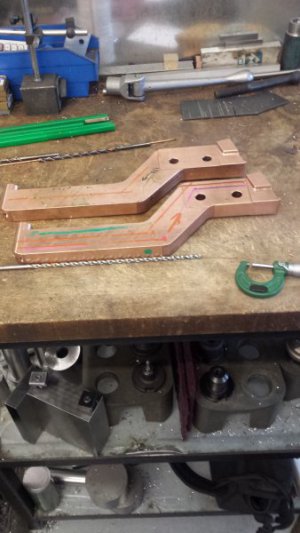I'm trying to drill a water jacket into a piece of copper. The hole diameter is dimensioned at 6mm and plugged with a 1/6-27 NPT brass fitting.
The depth of the hole is close to 195 mm. As the diameter is not critical, I start with a .250 diameter drill. (Close to tap drill size for the plug) and gradually step down sizes the deeper I get. I eventually have to insert my 5.2mm drill at the 140 mm mark. The problem is the drill drills undersized. As it goes in the copper will actually grap and break the drill. Now we have a scrap part.
How does one go about sharpening a drill so as it drills oversize?
Thanks.


